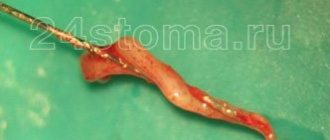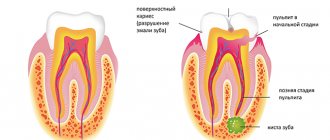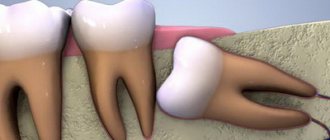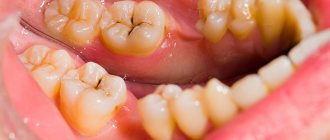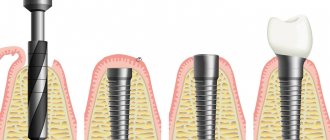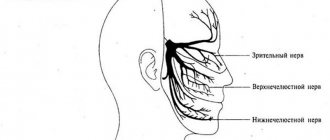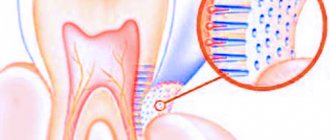Depulping a tooth, or removing the nerve of a tooth, is an important step in the treatment of dental pathologies. The main goal of the procedure is to protect adjacent teeth and soft tissues from the development of the inflammatory process. Before removal, anesthesia is performed, which eliminates the occurrence of pain. In some cases, discomfort is possible, but most often it is associated with a fear of dental treatment.
The Levoberezhnaya Dental Clinic offers a wide range of services, including high-quality and painless endodontic treatment. To make an appointment, call the phone number listed on the website.
When is it necessary to remove a nerve?
Dentists are trying their best to save the tooth, but, unfortunately, this is not always possible. For example, in case of extensive caries, it is necessary to resort to removing the nerve of the tooth. The nerve (pulp) is responsible for the sensitivity of the unit. Pain and other unpleasant symptoms arise precisely because of inflammation of the pulp. The following conditions are considered the main indications:
- Advanced periodontitis.
- Deep caries affecting the internal tissues of the tooth.
- Acute pulpitis.
Also, this manipulation is indicated in cases where crowns, bridges, veneers and other fixed prostheses are to be installed. First of all, this is done with the intention that the tooth does not get sick under the artificial structure. In this case, the unit is considered dead, but continues to perform its functional duties.
What causes complications?
After root canal filling, complications sometimes arise such as:
- the canals are sealed loosely, not completely (voids remain): re-treatment of the canals is required;
- broken instrument: during operation, the instrument may break off and remain in the canal (for example, in curved and curved canals);
- root perforation: when the tooth root is injured during work;
- removal of filling material beyond the root;
- repeated inflammation, when not the entire nerve was removed and the infection remained;
- bleeding from root canals.
Our Otradnoe Dental Center provides highly qualified dental care, including nerve removal, which is absolutely painless. Our doctors always conduct a thorough diagnosis and select appropriate treatment. Thanks to the extensive experience of our doctors, advanced equipment, and modern antiseptic solutions, treatment is carried out efficiently and without complications.
How does arsenic remove a nerve?
Note that removing pulp using arsenic is an outdated technique. Most often it is practiced in public clinics. First, the patient is sent for an x-ray, then the tooth is processed with a drill and unimpeded access to the nerve of the tooth is created. Next, an arsenic-based paste is placed into the formed bed, and a temporary filling is placed on top. As a rule, it is removed after 1-3 days. After the filling is removed, the canals are cleaned, then a permanent filling is fixed.
Contraindications for depulpation
When is it impossible to remove a dental nerve?
- stomatitis, inflammatory, purulent processes in the oral cavity;
- cardiovascular diseases;
- ARVI, sore throat, influenza;
- infectious hepatitis;
- hemorrhagic diathesis;
- acute leukemia;
- psychoemotional disorders;
- pregnancy.
Depulpation methods. How is the dental nerve removed?
Vital method
The vital depulpation method is used in adults and children - for all forms of pulpitis. This is a one-session procedure performed under local anesthesia. The dentist prepares the tooth, removes the pulp, cleans and fills the root canals, and then places a filling.
Devital method
The devital depulpation method is used to completely remove the coronal and root parts of the pulp. It differs from the vital method in the duration of treatment. An arsenic-free paste is applied to the pulp, after which a temporary filling is installed. The permanent filling is installed at your next visit to the dentist. In modern clinics, this method of treatment is used less and less.
Regardless of the method, the depulpation procedure is always carried out under anesthesia and the use of x-ray control of the tooth before and after depulpation. In 99% of cases, the vital method is used, in which complete, painless dental treatment can be completed in just one visit to the doctor.
From the history of depulpation or how were dental nerves removed before?
Depulping with arsenic is an outdated, quite painful and time-consuming method. The essence of depulpation with arsenic is that the dentist, using a dental drill, expands the root canal of the diseased tooth, opening direct access to the pulp. Then arsenic is placed in the canal and the tooth is covered with a temporary filling. Within a few days, arsenic affects the pulp, causing its death. A few days later, the patient visits the dentist again, who removes the temporary filling and removes the dead nerve from the canal. Then the dentist cleans the root canal and places a permanent filling. If the tooth continues to hurt after removing the nerve, the nerve may not have been completely removed. If pain after depulpation is caused by improper treatment and/or poor-quality canal treatment, the patient needs to visit the dentist again.
One of the main disadvantages of depulping with arsenic is its unsafety. With prolonged contact with a tooth, arsenic can lead to its complete destruction, because Arsenic is a poison, so arsenic paste was applied for a short period of time.
In modern dentistry, preference is given to safer methods of pulp removal.
Features of depulpation
Features of depulpation of baby teeth
It happens that pulpitis develops on baby teeth in children. In children, the depulpation procedure has its own characteristics:
- The minimum dosage of anesthesia is safe for the child;
- Careful opening of the crown;
- The most careful removal of the nerve ending, so as not to damage the primary processes of the molars;
- Thorough disinfection after depulpation to avoid re-inflammation;
- A filling for a baby tooth (based on mummifying compounds) – gives a disinfecting effect.
Depulpation of wisdom teeth
The difficulty of removing nerves from wisdom teeth lies in the inaccessibility of the teeth and the complexity of the structure of their canals. Therefore, if inflammatory processes occur in the pulp of wisdom teeth, it is better to remove the wisdom teeth.
Possible complications of depulpation
Complications that may arise after depulpation appear for 2 reasons:
- Anatomical features of dental canals and pulp.
- Incorrectly performed depulpation procedure.
Anatomical features of dental canals and pulp
Often the dental canals are very curved, in such cases access to the pulp can be difficult and it is difficult for the dentist to reach the nerve. In this regard, the pulp may not be completely removed, or cavities may remain in the canals.
The use of X-rays allows us to study the shape of the canals before removing the nerve and select the most appropriate instruments, which minimizes the likelihood of the above-mentioned treatment complications.
Incorrectly performed depulpation procedure
- Careless cleaning of the canals will preserve and intensify the inflammatory process due to incomplete removal of damaged tissue.
- Using an inappropriate pulp extractor channel size or improper handling of the instrument.
- Broken dental instrument, retention of its remains in the dental canal (this error may lead to the need to remove the tooth).
- Residual pulpitis occurs against the background of incompletely removed pulp.
- Perforation of root walls;
- Allergic reaction to filling material.
Poor disinfection of the canal when removing the nerve can trigger the process of suppuration. Which, in the absence of adequate treatment, can develop into a periodontal abscess. Such a complication leads to the need for tooth extraction.
Other possible complications:
Painful sensations for several days after depulpation - the duration is individual for everyone. If pain persists for a long time, it is necessary to consult a doctor to re-open the canals and carry out disinfection.
Specific problems can arise if the material is applied incorrectly: if the filling extends beyond the boundaries of the root apex, the jaw nerve may be pinched.
Recommendations
Recommendations after depulpation:
- refuse, for at least 2 hours, increased physical activity;
- rinse your mouth with antiseptics prescribed by your doctor during the day;
- hold off on eating for the first 3 hours (drink boiled, warm water through a straw);
- give up smoking and alcohol for five days, also do not take (solid, hot/cold, spicy) foods that cause irritation of the mucous membrane;
- It is forbidden to drink cold drinks, ice cream, or apply ice to the affected area.
Prevention recommendations:
Regular teeth cleaning combined with systematic visits to the dental clinic is the best way to save yourself from the need to undergo a nerve removal procedure. A visit to the dentist once every six months will ensure timely treatment of caries and will not allow the carious process to penetrate too deeply into the tooth tissue and spread to the pulp.
Remember! There are no folk remedies for removing the dental nerve! Even if it is possible to “kill” the nerve, pulp removal is only possible by a qualified dentist using special instruments!
Number of views 2,296
We also recommend:
Chewing gum: good or bad for teeth?
Does it hurt?
In most cases, the process of pulp necrosis using arsenic is painless. This is due to the pain-relieving components that are present in the arsenic paste. Sometimes patients complain of moderate pain, and this is normal. If you are experiencing severe pain, we recommend that you immediately visit the dentist.
Significant pain is possible if the dentist violated the rules for performing this procedure, for example, put too little arsenic.
Removal procedure
There are several methods for removing the nerve, it all depends on the specific case. When a doctor decides how to remove a nerve from a tooth, he takes into account several factors:
- Condition of a particular tooth: type of disease, degree of tooth destruction, indications for pulp removal and causes;
- The general health of the patient, including age, presence of chronic diseases;
- Technical equipment of the clinic, available instruments;
- Arsenal of medicines.
At the Aesthetic Art clinic, they prefer the fastest, least painful and safe method of depulpation without the use of arsenic, surgical removal of the nerve under local anesthesia. This treatment takes place in one or two doses, depending on the complexity of the particular case.
Further recommendations
When arsenic is present, the following rules must be followed:
- It is not recommended to use painkillers.
- Do not try to heat the tooth, even if it hurts. Such measures can lead to complications.
- For three hours after the temporary filling is installed, try to refrain from eating and drinking.
- Do not rinse your mouth.
If the doctor claims that it is necessary to resort to the removal of the dental nerve, there is no need to panic or refuse this procedure. If this is not done in a timely manner,
the tooth
removed completely. Even after depulpation, the tooth will last for many years.
How long does pulp removal take?
On average, it takes about 40-50 minutes for pain relief, nerve removal, and root canal treatment. If the doctor administers high-quality anesthesia, it will take effect almost immediately, and the patient will not feel pain throughout the entire process. If the effect of anesthesia weakens during depulpation, an additional injection is given.
Reference! Before administering an injection with anesthesia, the doctor treats the soft tissue with a special freezing agent. That is, the patient will not experience pain either when inserting a needle into the tissue or during the process of removing the dental nerve.
Where can you cure caries painlessly?
Regardless of what teeth need to be treated, you need to pay special attention to finding an experienced specialist. At the same time, it is very important that he conducts the appointment in a well-equipped dental center.
These requirements are fully met by the Line of Smile clinic. We employ doctors with extensive experience. They have access to the most effective and safe painkillers, so when you contact us, you don’t need to think about whether it’s possible to treat your teeth without pain. We guarantee each of our clients comfortable service conditions.
Why does deep caries develop?
The process of tooth decay under the influence of microorganisms and other factors is caries. Its onset and development is caused by the activity of pathogenic microflora of the oral cavity, in particular the bacteria Streptococcus mutans. They feed on sugars from food, cause fermentation and produce acid. It corrodes tooth tissue, which leads first to demineralization of the enamel, then to deformation of its structure and the formation of carious cavities. Gradually, the process spreads deeper and affects dentin - the bone tissue under the tooth enamel.
Caries most often does not develop at lightning speed and goes through several stages. First, a barely noticeable chalky spot forms on the enamel - an area that is different in color from the rest of the tooth. This is the area of demineralization where the carious process began. Enamel loses the mineral compounds that make up its structure, becomes more fragile and less resistant to harmful influences. This is the initial stage of caries - the spot stage. People often miss it due to the lack of obvious symptoms. Then tooth decay continues, and the disease progresses to the stage of superficial caries. The tooth begins to react to hot/cold, sour/sweet, and a clear defect is noticeable in the enamel.
Without treatment, superficial caries progresses to intermediate caries when dentin begins to deteriorate. Symptoms become more pronounced, pain occurs not only as a reaction to an irritant, but also on its own. According to statistics, most patients seek help from a dentist at the stage of average caries.
But there are also people whom even acute toothache will not force them to go to the dentist. And then the most complex and advanced form can develop - deep caries. At this stage, the carious cavity is in close proximity to the dental pulp; at any moment, inflammation can spread to the dental nerve and lead to pulpitis, and then to periodontitis.
When not to use local anesthesia
Anesthetics injected into the gums should not be used if the patient is allergic to them. They are also prescribed with extreme caution to persons who have diseases of the cardiovascular system, thyroid gland, or diabetes. In all these cases, complex dental interventions are carried out strictly in a hospital setting.
Before administering an anesthetic, the patient must tell the doctor what acute or chronic diseases he has. This will allow the doctor to make the right decision at the stage of choosing a method of pain prevention.
Anesthetics used for painless dental treatment
A good local anesthetic must satisfy a number of requirements:
- act quickly;
- have little toxicity;
- not absorbed into the systemic circulation;
- do not irritate the gums.
The selection of pain medication always occurs on an individual basis. The doctor takes into account the client’s age, his state of health, the treatment area, the threshold of pain sensitivity, and the characteristics of the existing disease.
More often than others, doctors use drugs containing articaine or mepivacaine.
Medicines based on articaine
Articaine is a local anesthetic belonging to the group of amides. It is characterized by a pronounced local anesthetic effect. Easily passes through the cell membrane into the nerve fiber. Blocks the conduction of nerve impulses along fibers.
Products containing this compound are used for uncomplicated removal of one or more molars, treatment of carious cavities, and grinding of crowns before prosthetics. It produces the medicine under the following trade names:
- "Ultracaine";
- "Ubistezin";
- "Septanest".
Painkillers containing mepivacaine
Mepivacaine is also an amide group anesthetic. It quickly passes through the lipid layer of the nerve cell membrane, is transformed into a cationic form and reacts with membrane sodium channel receptors. The latter are located at the endings of the nerves. Due to this, the conduction of impulses along nerve fibers temporarily becomes impossible.
Mepivacaine causes all types of local anesthesia:
- infiltration;
- terminal;
- conductor.
It acts very quickly and powerfully. Used for complex removal of radical units, during maxillofacial operations, tracheal intubation, esophagoscopy and bronchoscopy. Mepivacaine is used in the production of a medicine called Scandonest.
Don't put off dental treatment because you are afraid of dental pain. Today, doctors can carry out all manipulations with minimal discomfort for the patient, so there is no need to fear severe pain.

